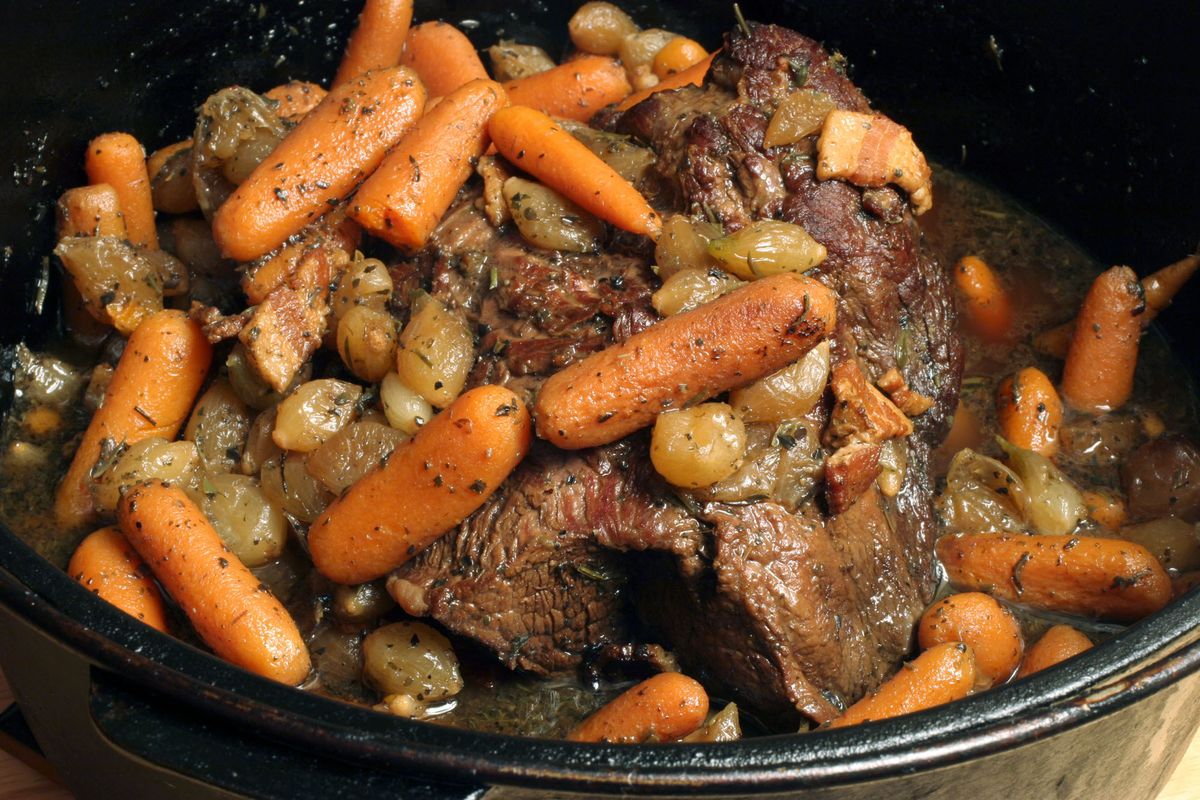Are you game for eating venison? Cookbook tells how to end doubts

Eileen Clarke is a remarkable package: She can hunt, shoot, butcher, cook and write.
The Montanan also is willing to share those skills so the rest of us pilgrims can get the most from the game we’ve harvested this season.
Clarke recently published her eighth cookbook, “Slice of the Wild.” This one’s a dandy devoted to handling and preparing big game from field to table.
The book stands apart from much of the crowd for several reasons:
•It’s written by a woman who, along with her husband, John Barsness, harvests and feasts on an average of four big-game animals – deer, elk, moose, goats, bighorn sheep, antelope or exotics from other continents– a year. The procedures for dressing, meat cutting, freezing as well as the recipes and cooking methods are well-tested and fine-tuned.
•The 100 game recipes are matched with 40 side-dish recipes that complement the wild meat.
•The book emphasizes that the preparation resulting in good-tasting game meat, as Clarke puts it, “starts with the shot.” That’s where her tutorial begins.
She explains the effects on meat toughness and flavor that stem from shooting a stressed animal or failing to cool the meat quickly or butchering too soon.
“Some hunters come into the sport without mentors to tell them how to take care of their game,” she said in a telephone interview. “I wanted to provide a resource.”
The book helps hunters and cooks customize meat preparation and recipes to the different parts of the animal.
Hence, the chapters: The Tender End (hind quarters and tenderloins), The Middle (ribs, briskets and flank steaks), The Tougher End (slow cookers, pot roasts, soups and stews) and Tough and Tougher (burger, sausage and jerky).
“Wild game should be treated like real meat, not mystery meat cut into chunks and stuffed in freezer bags marked ‘venison’ regardless of what part of the animal it comes from,” she said. “It’s not all chili and stew meat.
“There’s a tenderness value just as there is in different cuts of beef. Simply put, the higher on the animal, the more tender the meat. I gear the recipes accordingly.”
After testing some this book’s offerings on this year’s harvest of elk and antelope, my wife, Meredith, and I have concluded that every recipe is a winner.
But we also were reminded, as it is with all cookbooks, that some “practice” is required in fine-tuning preparation, especially before serving to guests.
“Timing everything to be done at the right time is one of the keys to good cooking,” Clarke agreed.
For instance, last Sunday I carefully followed the directions for Pan-Roasted Safari Steaks by searing the meat in a skillet as directed and putting the steaks in a hot oven while I reused the skillet to reduce a sauce of red wine, ruby port, garlic, tomato paste, apple juice concentrate and red currant jelly.
Unfortunately, by the time I simmered the sauce to a thick consistency, the steaks in the oven had begun to dry out – one of the cardinal sins Clarke lists for cooking lean wild game.
Degrading the steaks made me wince, since I carried out that meat in four two-mile round-trip hauls from where I’d bagged that elk. I want to savor every morsel of it.
So I tried again with more steaks from the backstrap, turning down the oven heat from the recommended 475. I also turned up the stove heat and stirred more often to lower the time needed for thickening the sauce.
I finished the dish, as directed, by simmering the steaks in the sauce for two minutes before serving them to my wife.
“Mmmm!” she said after the first bite, and the second, and the third.
The wine glass came to her lips, but no words came out of her mouth for several minutes. Just ever-louder “mmmms.”
Anyone who knows my wife will agree that leaving Meredith speechless is virtually impossible and perhaps the highest praise a recipe can get.
“From the feedback I get,” Clarke said, “one of the favorite recipes from the book is the Fall-Apart Oven Pot Roast, but maybe that’s simply because there’s a picture of it.”
That brings up one of the few criticisms one might list for the cookbook, which features 25 photos of Clarke and Barsness in hero hunter shots with their quarry and only 16 photos of prepared dishes.
Seeing more illustrations of the finished product would be far more instructive for a cookbook.
But overall, the book is a gem with numerous tips and tables that should be absorbed by devoting an hour of good reading before embarking on the first recipe.
For example, I could have salvaged my first round of dried-out elk steaks into a delectable meal had I read Clarke’s “$5 Solution” in advance.
“It happens to everybody sooner or later,” she said. “Overcooking is the worst thing you can do to wild meat or fish. But if it happens, this is the fix.”
You’ll have to read about it.
•“Slice of the Wild” is available for $29.95 ppd. from Deep Creek Press, P.O. Box 579, Townsend, Mont., 59644 or online at www.riflesandrecipes.com.
•Looking for DVDs on field dressing, butchering and processing game? Check out the offerings at www.himtnjerky.com.